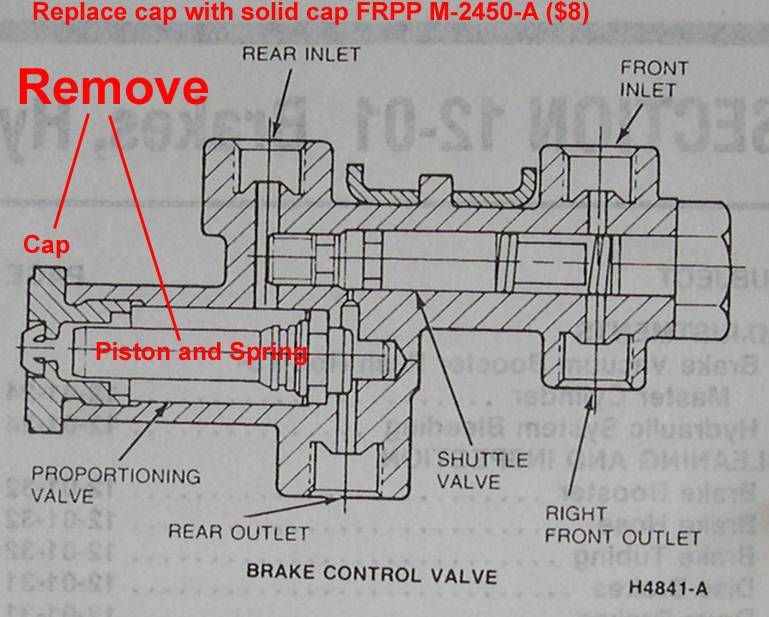 ultrastang wrote:
ultrastang wrote:
 MustangSteve wrote:
MustangSteve wrote:
OK,now that we have all THAT straightened out...
GOT IT, Sal?
This can be VERY (mentally) tiring trying to explain all the brake configuration possiblities on Mustangs/Fords, and would be even harder to try and explain it with just text and no photos. It gets even more complicated trying to explain it when someone is going from a pre-'67 era brake system to needing brake components from a '67-up era and what parts need to be eliminated and what parts need to be added, to make the system work safely and correctly.
...I think I'm gonna let my brain rest now. 
Why not start with all the possible OE stock brake configurations on the 64-66 models first. Include all the hardware (mc, single bowl small reserviour, single bowl large reserviour , single port or dual port, booster or no booster, drum drum no power, drum drum power, disc drum no power, brass distribution Tee block, kelsey hayes prop valve, rear brake hose single exhaust, rear brake hose dual exhaust. manual brake pedal, automatic brake pedal, brake switch, dash light, etc. ANd the options that were not available stock such as disc drum with power, or disc disc no power, disc disc power. Show the electrical diagrams for the stock OE configurations.
Lets at least start with all the OE stock configurations that were possible. Label them A-Z. hopefully this might help those that are missing components or have mismatched components to get them safely on the road with a correct stock configuration. Then list the upgrade paths they can take from point A, or point B, etc.
Mention the brake pedal bearings that wear and for people to check that.
Mention the pros and cons of each oe setup and as to why they evolved from A to Z.
Mention the forum mustang parts suppliers to support for stock OE parts, and parts suppliers for upgrade path parts.
Yeah its alot, but if its done once, then saved somewhere, then all that needs to be done is supply a link to that source instead of retyping information that may or may not be accurate, complete, or misunderstood by a reader each time a brake question comes up. Especially when it comes to many people giving out brake answers that can jeopardize someone who may have only read the first or second post which may be wrong, and never read subsequent replies that corrected previous posters.
i think this is important.

 1 of 1
1 of 1

 6sally6 wrote:
6sally6 wrote:











